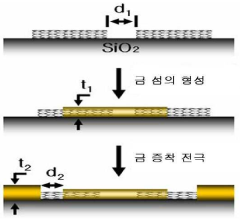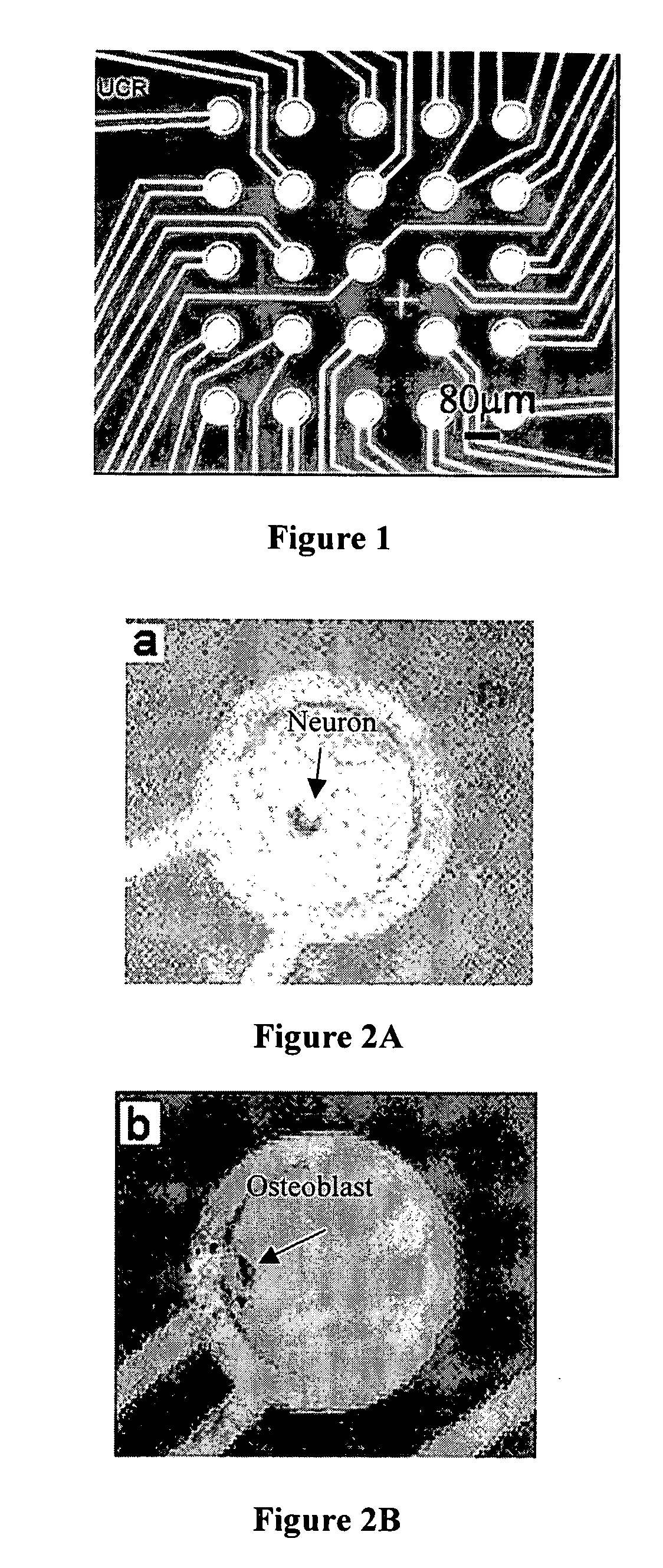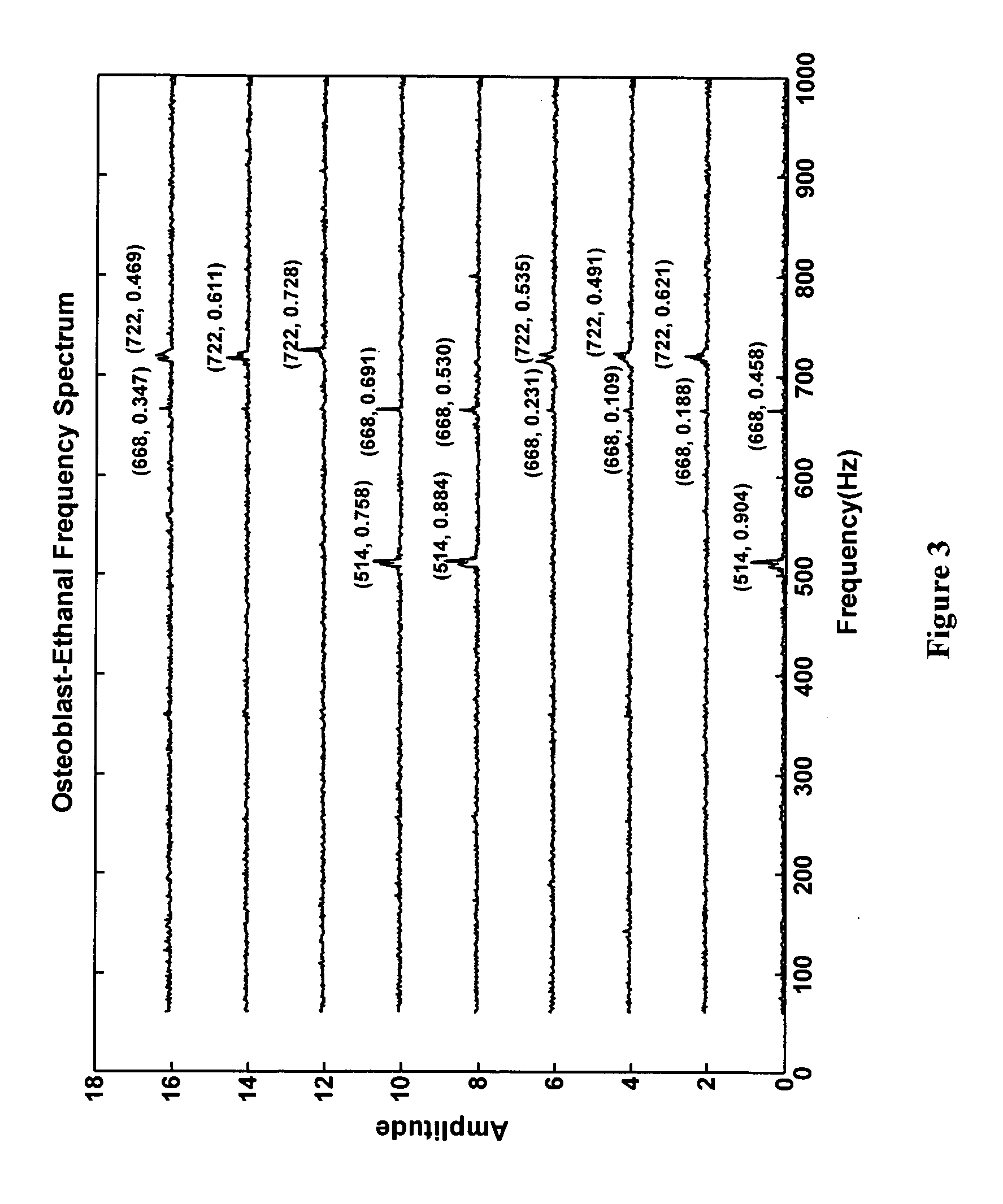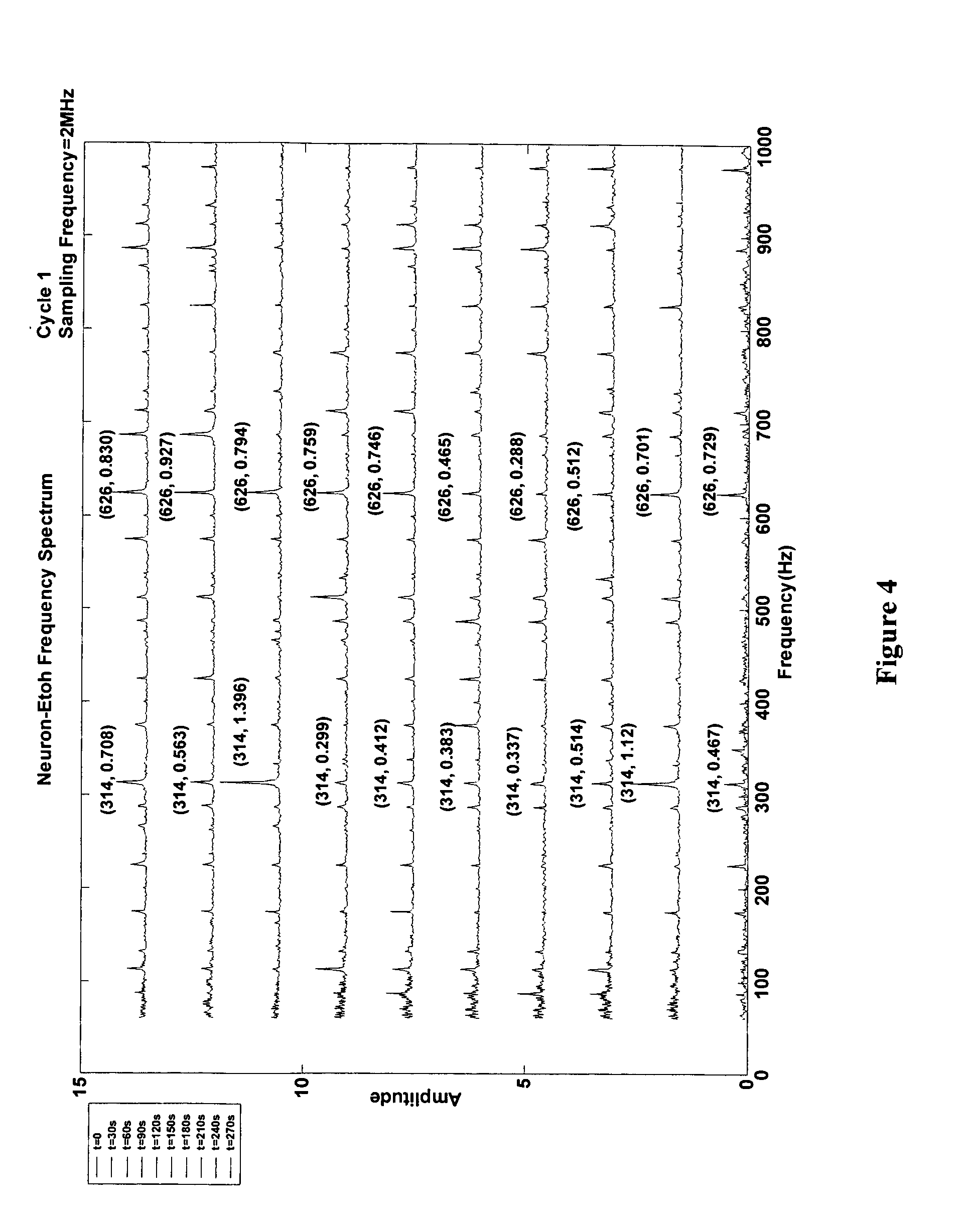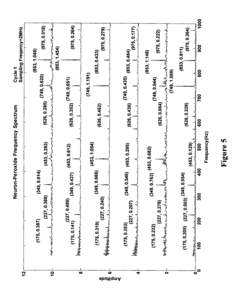Development of Biosensors for Detecting Carbon Tetrachloride
JUL 31, 20259 MIN READ
Generate Your Research Report Instantly with AI Agent
Patsnap Eureka helps you evaluate technical feasibility & market potential.
Biosensor Tech Background
Biosensors have emerged as a powerful analytical tool in environmental monitoring, offering rapid, sensitive, and specific detection of various pollutants. The development of biosensors for detecting carbon tetrachloride (CCl4) represents a significant advancement in environmental protection and public health safeguarding.
Carbon tetrachloride, a volatile organic compound, has been widely used in industrial applications but is now recognized as a serious environmental contaminant and potential carcinogen. Its detection in air, water, and soil is crucial for environmental management and remediation efforts. Traditional methods for CCl4 detection, such as gas chromatography and mass spectrometry, while accurate, are often time-consuming, expensive, and require sophisticated laboratory equipment.
The evolution of biosensor technology for CCl4 detection has its roots in the broader field of environmental biosensors. Early biosensors primarily focused on detecting biological contaminants, but advances in molecular biology and materials science have expanded their application to chemical pollutants like CCl4. The integration of biological recognition elements with transducer systems has enabled the development of highly specific and sensitive detection methods.
Key milestones in biosensor development for CCl4 detection include the identification of suitable biorecognition elements, such as enzymes or microorganisms that interact specifically with CCl4, and the optimization of transduction mechanisms to convert these biological interactions into measurable signals. Advances in nanotechnology and microfluidics have further enhanced the sensitivity and miniaturization of these biosensors.
The current technological landscape for CCl4 biosensors encompasses various approaches, including enzyme-based sensors, whole-cell biosensors, and DNA-based recognition systems. Each of these approaches offers unique advantages in terms of sensitivity, specificity, and ease of use. Enzyme-based sensors, for instance, utilize enzymes that catalyze reactions involving CCl4, producing detectable byproducts. Whole-cell biosensors employ genetically engineered microorganisms that respond to the presence of CCl4 with measurable changes in their metabolism or gene expression.
Recent trends in biosensor development for CCl4 detection focus on improving sensor stability, reducing interference from other environmental contaminants, and developing portable, field-deployable devices. The integration of biosensors with wireless communication technologies and data analytics platforms is also gaining traction, enabling real-time monitoring and data-driven decision-making in environmental management.
Carbon tetrachloride, a volatile organic compound, has been widely used in industrial applications but is now recognized as a serious environmental contaminant and potential carcinogen. Its detection in air, water, and soil is crucial for environmental management and remediation efforts. Traditional methods for CCl4 detection, such as gas chromatography and mass spectrometry, while accurate, are often time-consuming, expensive, and require sophisticated laboratory equipment.
The evolution of biosensor technology for CCl4 detection has its roots in the broader field of environmental biosensors. Early biosensors primarily focused on detecting biological contaminants, but advances in molecular biology and materials science have expanded their application to chemical pollutants like CCl4. The integration of biological recognition elements with transducer systems has enabled the development of highly specific and sensitive detection methods.
Key milestones in biosensor development for CCl4 detection include the identification of suitable biorecognition elements, such as enzymes or microorganisms that interact specifically with CCl4, and the optimization of transduction mechanisms to convert these biological interactions into measurable signals. Advances in nanotechnology and microfluidics have further enhanced the sensitivity and miniaturization of these biosensors.
The current technological landscape for CCl4 biosensors encompasses various approaches, including enzyme-based sensors, whole-cell biosensors, and DNA-based recognition systems. Each of these approaches offers unique advantages in terms of sensitivity, specificity, and ease of use. Enzyme-based sensors, for instance, utilize enzymes that catalyze reactions involving CCl4, producing detectable byproducts. Whole-cell biosensors employ genetically engineered microorganisms that respond to the presence of CCl4 with measurable changes in their metabolism or gene expression.
Recent trends in biosensor development for CCl4 detection focus on improving sensor stability, reducing interference from other environmental contaminants, and developing portable, field-deployable devices. The integration of biosensors with wireless communication technologies and data analytics platforms is also gaining traction, enabling real-time monitoring and data-driven decision-making in environmental management.
CCl4 Detection Market
The market for carbon tetrachloride (CCl4) detection has been experiencing significant growth due to increasing environmental concerns and stringent regulations regarding hazardous substances. CCl4, a potent ozone-depleting substance and potential carcinogen, has been widely used in various industrial applications, creating a pressing need for effective detection methods. The global biosensor market, valued at approximately $21 billion in 2020, is projected to reach $33 billion by 2026, with environmental monitoring sensors playing a crucial role in this growth.
The demand for CCl4 detection is primarily driven by environmental protection agencies, industrial safety departments, and research institutions. These entities require reliable, sensitive, and rapid detection methods to monitor CCl4 levels in air, water, and soil. The market is particularly strong in regions with a history of industrial pollution and countries with strict environmental regulations, such as the United States, European Union member states, and China.
In the industrial sector, the need for CCl4 detection is most pronounced in chemical manufacturing, dry cleaning, and metal degreasing industries. These sectors are under increasing pressure to monitor and control CCl4 emissions, creating a steady demand for advanced detection technologies. The agricultural sector also contributes to market growth, as CCl4 contamination in soil and groundwater can affect crop yields and food safety.
The biosensor market for CCl4 detection is characterized by a shift towards miniaturization, portability, and real-time monitoring capabilities. This trend is driven by the need for on-site testing and continuous environmental monitoring. Consequently, there is a growing interest in developing biosensors that can be integrated into portable devices or incorporated into existing environmental monitoring systems.
Emerging technologies, such as nanotechnology-based biosensors and smartphone-integrated detection systems, are expected to reshape the CCl4 detection market. These innovations promise enhanced sensitivity, specificity, and user-friendliness, potentially expanding the market to include personal safety applications and citizen science initiatives.
Despite the promising outlook, the CCl4 detection market faces challenges such as high development costs, regulatory hurdles, and competition from established detection methods. However, the increasing focus on environmental sustainability and public health is expected to drive continued investment and innovation in this field, ensuring sustained market growth in the coming years.
The demand for CCl4 detection is primarily driven by environmental protection agencies, industrial safety departments, and research institutions. These entities require reliable, sensitive, and rapid detection methods to monitor CCl4 levels in air, water, and soil. The market is particularly strong in regions with a history of industrial pollution and countries with strict environmental regulations, such as the United States, European Union member states, and China.
In the industrial sector, the need for CCl4 detection is most pronounced in chemical manufacturing, dry cleaning, and metal degreasing industries. These sectors are under increasing pressure to monitor and control CCl4 emissions, creating a steady demand for advanced detection technologies. The agricultural sector also contributes to market growth, as CCl4 contamination in soil and groundwater can affect crop yields and food safety.
The biosensor market for CCl4 detection is characterized by a shift towards miniaturization, portability, and real-time monitoring capabilities. This trend is driven by the need for on-site testing and continuous environmental monitoring. Consequently, there is a growing interest in developing biosensors that can be integrated into portable devices or incorporated into existing environmental monitoring systems.
Emerging technologies, such as nanotechnology-based biosensors and smartphone-integrated detection systems, are expected to reshape the CCl4 detection market. These innovations promise enhanced sensitivity, specificity, and user-friendliness, potentially expanding the market to include personal safety applications and citizen science initiatives.
Despite the promising outlook, the CCl4 detection market faces challenges such as high development costs, regulatory hurdles, and competition from established detection methods. However, the increasing focus on environmental sustainability and public health is expected to drive continued investment and innovation in this field, ensuring sustained market growth in the coming years.
Biosensor Challenges
The development of biosensors for detecting carbon tetrachloride faces several significant challenges that researchers and engineers must overcome. One of the primary obstacles is the low sensitivity and selectivity of current sensing mechanisms. Carbon tetrachloride, being a volatile organic compound, requires highly sensitive detection methods to accurately measure its presence in various environments, particularly at low concentrations.
Another major challenge lies in the stability and durability of biosensors. The harsh conditions often present in industrial settings where carbon tetrachloride is used or potentially released can degrade the biological components of the sensors, leading to reduced accuracy and shortened lifespan. Researchers are grappling with the need to develop robust biosensing platforms that can withstand these challenging environments while maintaining their detection capabilities over extended periods.
The integration of biosensors into practical, field-deployable devices presents yet another hurdle. Miniaturization of sensing systems without compromising performance is crucial for on-site monitoring applications. This involves not only reducing the size of the sensing elements but also developing compact, efficient signal processing and data transmission components.
Interference from other chemicals present in the target environment poses a significant challenge to the specificity of carbon tetrachloride detection. Many industrial settings contain a complex mixture of chemicals, some of which may have similar properties to carbon tetrachloride. Developing biosensors that can accurately distinguish the target compound from these potential interferents is a key area of ongoing research.
The cost-effectiveness of biosensor production and deployment is another critical challenge. For widespread adoption, especially in environmental monitoring and industrial safety applications, biosensors need to be economically viable. This requires optimizing manufacturing processes, exploring new materials, and developing scalable production techniques.
Regulatory compliance and standardization present additional challenges in the biosensor development process. Ensuring that new biosensing technologies meet the stringent requirements set by environmental and health agencies for accurate and reliable detection of carbon tetrachloride is essential for their acceptance and implementation in real-world scenarios.
Lastly, the challenge of real-time, continuous monitoring capabilities remains a significant focus for researchers. Developing biosensors that can provide instant, ongoing measurements of carbon tetrachloride levels, rather than relying on periodic sampling, is crucial for early warning systems and effective environmental and health protection measures.
Another major challenge lies in the stability and durability of biosensors. The harsh conditions often present in industrial settings where carbon tetrachloride is used or potentially released can degrade the biological components of the sensors, leading to reduced accuracy and shortened lifespan. Researchers are grappling with the need to develop robust biosensing platforms that can withstand these challenging environments while maintaining their detection capabilities over extended periods.
The integration of biosensors into practical, field-deployable devices presents yet another hurdle. Miniaturization of sensing systems without compromising performance is crucial for on-site monitoring applications. This involves not only reducing the size of the sensing elements but also developing compact, efficient signal processing and data transmission components.
Interference from other chemicals present in the target environment poses a significant challenge to the specificity of carbon tetrachloride detection. Many industrial settings contain a complex mixture of chemicals, some of which may have similar properties to carbon tetrachloride. Developing biosensors that can accurately distinguish the target compound from these potential interferents is a key area of ongoing research.
The cost-effectiveness of biosensor production and deployment is another critical challenge. For widespread adoption, especially in environmental monitoring and industrial safety applications, biosensors need to be economically viable. This requires optimizing manufacturing processes, exploring new materials, and developing scalable production techniques.
Regulatory compliance and standardization present additional challenges in the biosensor development process. Ensuring that new biosensing technologies meet the stringent requirements set by environmental and health agencies for accurate and reliable detection of carbon tetrachloride is essential for their acceptance and implementation in real-world scenarios.
Lastly, the challenge of real-time, continuous monitoring capabilities remains a significant focus for researchers. Developing biosensors that can provide instant, ongoing measurements of carbon tetrachloride levels, rather than relying on periodic sampling, is crucial for early warning systems and effective environmental and health protection measures.
Current CCl4 Solutions
01 Optical biosensor detection methods
Optical biosensors utilize light-based techniques for detecting biological analytes. These methods may include fluorescence, surface plasmon resonance, or colorimetric detection. Optical biosensors offer high sensitivity and can be used for real-time, label-free detection of various biomolecules.- Optical biosensor detection methods: Optical biosensors utilize light-based techniques for detecting biological analytes. These methods may include fluorescence, surface plasmon resonance, or colorimetric detection. Optical biosensors offer high sensitivity and can be used for real-time, label-free detection of various biomolecules.
- Electrochemical biosensor detection: Electrochemical biosensors measure electrical signals generated by biochemical reactions. These sensors can detect changes in current, voltage, or impedance caused by the interaction between the target analyte and the biorecognition element. Electrochemical biosensors are known for their high sensitivity, low cost, and potential for miniaturization.
- Nanomaterial-based biosensor detection: Nanomaterials such as nanoparticles, nanotubes, and nanowires are incorporated into biosensors to enhance their performance. These materials can improve sensitivity, selectivity, and response time of biosensors due to their unique physical and chemical properties. Nanomaterial-based biosensors can be used for detecting various biomolecules and pathogens.
- Microfluidic biosensor platforms: Microfluidic biosensor platforms integrate sample preparation, analysis, and detection into a single miniaturized device. These lab-on-a-chip systems offer advantages such as reduced sample volume, faster analysis times, and potential for multiplexed detection. Microfluidic biosensors can be used for various applications, including point-of-care diagnostics.
- Wearable biosensor detection systems: Wearable biosensors are designed for continuous, non-invasive monitoring of biological markers. These devices can be integrated into clothing, accessories, or directly attached to the skin. Wearable biosensors enable real-time monitoring of various physiological parameters and can be used for health monitoring, fitness tracking, and early disease detection.
02 Electrochemical biosensor detection
Electrochemical biosensors measure electrical signals generated by biochemical reactions. These sensors can detect changes in current, voltage, or impedance caused by the interaction between the target analyte and the biorecognition element. Electrochemical biosensors are known for their high sensitivity, rapid response, and potential for miniaturization.Expand Specific Solutions03 Nanomaterial-based biosensor detection
Nanomaterials such as nanoparticles, nanotubes, and nanowires are incorporated into biosensors to enhance their performance. These materials can improve sensitivity, selectivity, and signal amplification in biosensor detection. Nanomaterial-based biosensors have applications in various fields, including medical diagnostics and environmental monitoring.Expand Specific Solutions04 Microfluidic biosensor platforms
Microfluidic biosensor platforms integrate sample preparation, analysis, and detection into a single miniaturized device. These lab-on-a-chip systems offer advantages such as reduced sample volume, faster analysis times, and potential for multiplexed detection. Microfluidic biosensors are particularly useful for point-of-care diagnostics and high-throughput screening applications.Expand Specific Solutions05 Aptamer-based biosensor detection
Aptamer-based biosensors use synthetic oligonucleotides as biorecognition elements for detecting various targets, including proteins, small molecules, and cells. These biosensors offer advantages such as high affinity, specificity, and stability. Aptamer-based detection can be combined with various transduction methods, including optical, electrochemical, and mass-sensitive techniques.Expand Specific Solutions
Key Industry Players
The development of biosensors for detecting carbon tetrachloride is in a nascent stage, with significant potential for growth. The market is relatively small but expanding, driven by increasing environmental concerns and regulatory requirements. The technology is still evolving, with varying levels of maturity among key players. Companies like Canon, Inc. and FUJIFILM Business Innovation Corp. are leveraging their expertise in imaging and chemical technologies to advance biosensor development. Academic institutions such as the University of the West of England and Duke University are contributing to fundamental research, while specialized firms like NANO Co., Ltd. are focusing on sensor applications. The competitive landscape is diverse, with collaborations between industry and academia playing a crucial role in driving innovation and commercialization efforts.
The Regents of the University of California
Technical Solution: The University of California has pioneered a novel biosensor for carbon tetrachloride detection based on genetically engineered bacteria. Their approach utilizes synthetic biology to create a strain of Escherichia coli that expresses a fluorescent protein in the presence of carbon tetrachloride. The bacteria are encapsulated in a biocompatible hydrogel matrix, which is then integrated into a microfluidic chip. When carbon tetrachloride is present in a sample, it diffuses into the hydrogel, triggering the bacterial cells to produce a fluorescent signal. This signal is detected by an integrated optical sensor, allowing for rapid and sensitive detection[2][4]. The biosensor system also incorporates a microprocessor for data analysis and wireless communication capabilities for remote monitoring. The University of California's biosensor can detect carbon tetrachloride at concentrations as low as 10 parts per trillion (ppt), making it one of the most sensitive systems available[6].
Strengths: Extremely high sensitivity, potential for continuous monitoring, and eco-friendly approach using living organisms. Weaknesses: Potential issues with long-term stability of bacterial cells and the need for periodic replenishment of the biological components.
Dalian Institute of Chemical Physics Chinese Academy of Sci
Technical Solution: The Dalian Institute of Chemical Physics (DICP) has developed advanced biosensors for detecting carbon tetrachloride using a combination of nanotechnology and electrochemistry. Their approach involves the use of functionalized carbon nanotubes (CNTs) as the sensing element, which are modified with specific enzymes or antibodies that selectively bind to carbon tetrachloride molecules. The CNTs are integrated into a microfluidic platform, allowing for rapid and sensitive detection. The biosensor utilizes electrochemical impedance spectroscopy (EIS) to measure changes in the electrical properties of the CNTs upon interaction with carbon tetrachloride, providing quantitative results in real-time[1][3]. DICP has also incorporated machine learning algorithms to improve the sensor's accuracy and reduce false positives, enabling detection of carbon tetrachloride at concentrations as low as parts per billion (ppb) levels[5].
Strengths: High sensitivity and selectivity, real-time detection capabilities, and integration of advanced technologies. Weaknesses: Potential complexity in manufacturing and calibration, and possible interference from other chlorinated compounds in complex environmental samples.
Core Biosensor Patents
A biosensor based on carbonnanotube-field effect transistor and a method for producing thereof
PatentActiveKR1020100113698A
Innovation
- A biosensor design utilizing a carbon nanotube transistor with a wide Schottky contact area and chemical gating effect, where a receptor is fixed to a detection area to interact with the target material, changing contact resistance and current flow for detection.
Biosensors having single reactant components immobilized over single electrodes and methods of making and using thereof
PatentInactiveUS20050003396A1
Innovation
- The development of single reactant components, such as cells or biomolecules, immobilized over single electrodes using alternating current fields, allowing for the isolation and analysis of specific analytes with improved sensitivity and reusability, enabling detection of minute concentrations and unknown analytes through signature pattern vectors.
Environmental Impact
The development of biosensors for detecting carbon tetrachloride has significant environmental implications. Carbon tetrachloride, a potent ozone-depleting substance and greenhouse gas, poses serious threats to both human health and ecosystems. The ability to accurately detect and monitor this compound is crucial for environmental protection and regulatory compliance.
Biosensors offer a promising solution for rapid, sensitive, and cost-effective detection of carbon tetrachloride in various environmental matrices. These devices can provide real-time monitoring capabilities, enabling swift response to potential contamination events and more effective remediation efforts. The implementation of biosensor technology for carbon tetrachloride detection can lead to improved environmental management practices and reduced ecological impact.
The use of biosensors in environmental monitoring can significantly enhance our understanding of carbon tetrachloride distribution and fate in ecosystems. By enabling more frequent and widespread sampling, these devices can help identify pollution sources, track contaminant migration, and assess the effectiveness of remediation strategies. This improved data collection can inform policy decisions and guide targeted interventions to mitigate environmental damage.
Furthermore, the development of biosensors for carbon tetrachloride detection may have broader implications for environmental sensing technologies. Advances in this field could potentially be applied to the detection of other harmful pollutants, contributing to more comprehensive environmental monitoring systems. This could lead to a paradigm shift in how we approach environmental protection, moving towards more proactive and data-driven management strategies.
The environmental impact of biosensor development extends beyond their application in pollution detection. The production and disposal of biosensors themselves must be considered from a sustainability perspective. Efforts to develop eco-friendly materials and manufacturing processes for biosensors can minimize their environmental footprint, aligning with broader goals of sustainable technology development.
In conclusion, the development of biosensors for detecting carbon tetrachloride has the potential to significantly enhance environmental protection efforts. By providing accurate, real-time monitoring capabilities, these devices can contribute to more effective pollution control, improved ecosystem management, and ultimately, a healthier environment. As research in this field progresses, it is crucial to consider both the direct benefits of improved detection capabilities and the broader implications for sustainable technology development and environmental stewardship.
Biosensors offer a promising solution for rapid, sensitive, and cost-effective detection of carbon tetrachloride in various environmental matrices. These devices can provide real-time monitoring capabilities, enabling swift response to potential contamination events and more effective remediation efforts. The implementation of biosensor technology for carbon tetrachloride detection can lead to improved environmental management practices and reduced ecological impact.
The use of biosensors in environmental monitoring can significantly enhance our understanding of carbon tetrachloride distribution and fate in ecosystems. By enabling more frequent and widespread sampling, these devices can help identify pollution sources, track contaminant migration, and assess the effectiveness of remediation strategies. This improved data collection can inform policy decisions and guide targeted interventions to mitigate environmental damage.
Furthermore, the development of biosensors for carbon tetrachloride detection may have broader implications for environmental sensing technologies. Advances in this field could potentially be applied to the detection of other harmful pollutants, contributing to more comprehensive environmental monitoring systems. This could lead to a paradigm shift in how we approach environmental protection, moving towards more proactive and data-driven management strategies.
The environmental impact of biosensor development extends beyond their application in pollution detection. The production and disposal of biosensors themselves must be considered from a sustainability perspective. Efforts to develop eco-friendly materials and manufacturing processes for biosensors can minimize their environmental footprint, aligning with broader goals of sustainable technology development.
In conclusion, the development of biosensors for detecting carbon tetrachloride has the potential to significantly enhance environmental protection efforts. By providing accurate, real-time monitoring capabilities, these devices can contribute to more effective pollution control, improved ecosystem management, and ultimately, a healthier environment. As research in this field progresses, it is crucial to consider both the direct benefits of improved detection capabilities and the broader implications for sustainable technology development and environmental stewardship.
Regulatory Compliance
The development of biosensors for detecting carbon tetrachloride must adhere to strict regulatory compliance standards to ensure their safety, efficacy, and reliability. In the United States, the Environmental Protection Agency (EPA) plays a crucial role in regulating the detection and monitoring of carbon tetrachloride in various environmental matrices. The EPA has established specific methods and guidelines for the analysis of carbon tetrachloride, which biosensor developers must consider during the design and validation processes.
The Food and Drug Administration (FDA) also has oversight in cases where biosensors may be used for medical diagnostics or in food safety applications. Compliance with Good Laboratory Practices (GLP) and Good Manufacturing Practices (GMP) is essential for biosensor development, particularly when intended for commercial use or clinical applications. These practices ensure the consistency and reliability of biosensor production and testing.
Internationally, organizations such as the International Organization for Standardization (ISO) provide standards that are relevant to biosensor development. ISO 13485, which specifies requirements for quality management systems in medical devices, may apply to certain biosensor applications. Additionally, the European Union's Registration, Evaluation, Authorization, and Restriction of Chemicals (REACH) regulation impacts the use and detection of carbon tetrachloride, influencing biosensor development for European markets.
Regulatory bodies often require extensive validation studies to demonstrate the accuracy, precision, and specificity of biosensors. This includes determining the limit of detection, range of linearity, and potential interferents that may affect the sensor's performance. Developers must also consider the stability and shelf-life of biosensors, as these factors are critical for regulatory approval and commercial viability.
Environmental regulations, such as the Clean Water Act and Safe Drinking Water Act in the United States, set permissible limits for carbon tetrachloride in water sources. Biosensors designed for environmental monitoring must be capable of detecting carbon tetrachloride at or below these regulatory thresholds. Compliance with these regulations often necessitates regular calibration and quality control measures to ensure ongoing accuracy and reliability of biosensor readings.
As biosensor technology advances, regulatory frameworks may need to evolve to address novel detection methods and materials. Developers should maintain open communication with regulatory agencies throughout the development process to ensure compliance and facilitate smoother approval processes. This proactive approach can help identify potential regulatory hurdles early in the development cycle and guide research efforts towards compliant and marketable biosensor solutions for carbon tetrachloride detection.
The Food and Drug Administration (FDA) also has oversight in cases where biosensors may be used for medical diagnostics or in food safety applications. Compliance with Good Laboratory Practices (GLP) and Good Manufacturing Practices (GMP) is essential for biosensor development, particularly when intended for commercial use or clinical applications. These practices ensure the consistency and reliability of biosensor production and testing.
Internationally, organizations such as the International Organization for Standardization (ISO) provide standards that are relevant to biosensor development. ISO 13485, which specifies requirements for quality management systems in medical devices, may apply to certain biosensor applications. Additionally, the European Union's Registration, Evaluation, Authorization, and Restriction of Chemicals (REACH) regulation impacts the use and detection of carbon tetrachloride, influencing biosensor development for European markets.
Regulatory bodies often require extensive validation studies to demonstrate the accuracy, precision, and specificity of biosensors. This includes determining the limit of detection, range of linearity, and potential interferents that may affect the sensor's performance. Developers must also consider the stability and shelf-life of biosensors, as these factors are critical for regulatory approval and commercial viability.
Environmental regulations, such as the Clean Water Act and Safe Drinking Water Act in the United States, set permissible limits for carbon tetrachloride in water sources. Biosensors designed for environmental monitoring must be capable of detecting carbon tetrachloride at or below these regulatory thresholds. Compliance with these regulations often necessitates regular calibration and quality control measures to ensure ongoing accuracy and reliability of biosensor readings.
As biosensor technology advances, regulatory frameworks may need to evolve to address novel detection methods and materials. Developers should maintain open communication with regulatory agencies throughout the development process to ensure compliance and facilitate smoother approval processes. This proactive approach can help identify potential regulatory hurdles early in the development cycle and guide research efforts towards compliant and marketable biosensor solutions for carbon tetrachloride detection.
Unlock deeper insights with Patsnap Eureka Quick Research — get a full tech report to explore trends and direct your research. Try now!
Generate Your Research Report Instantly with AI Agent
Supercharge your innovation with Patsnap Eureka AI Agent Platform!

